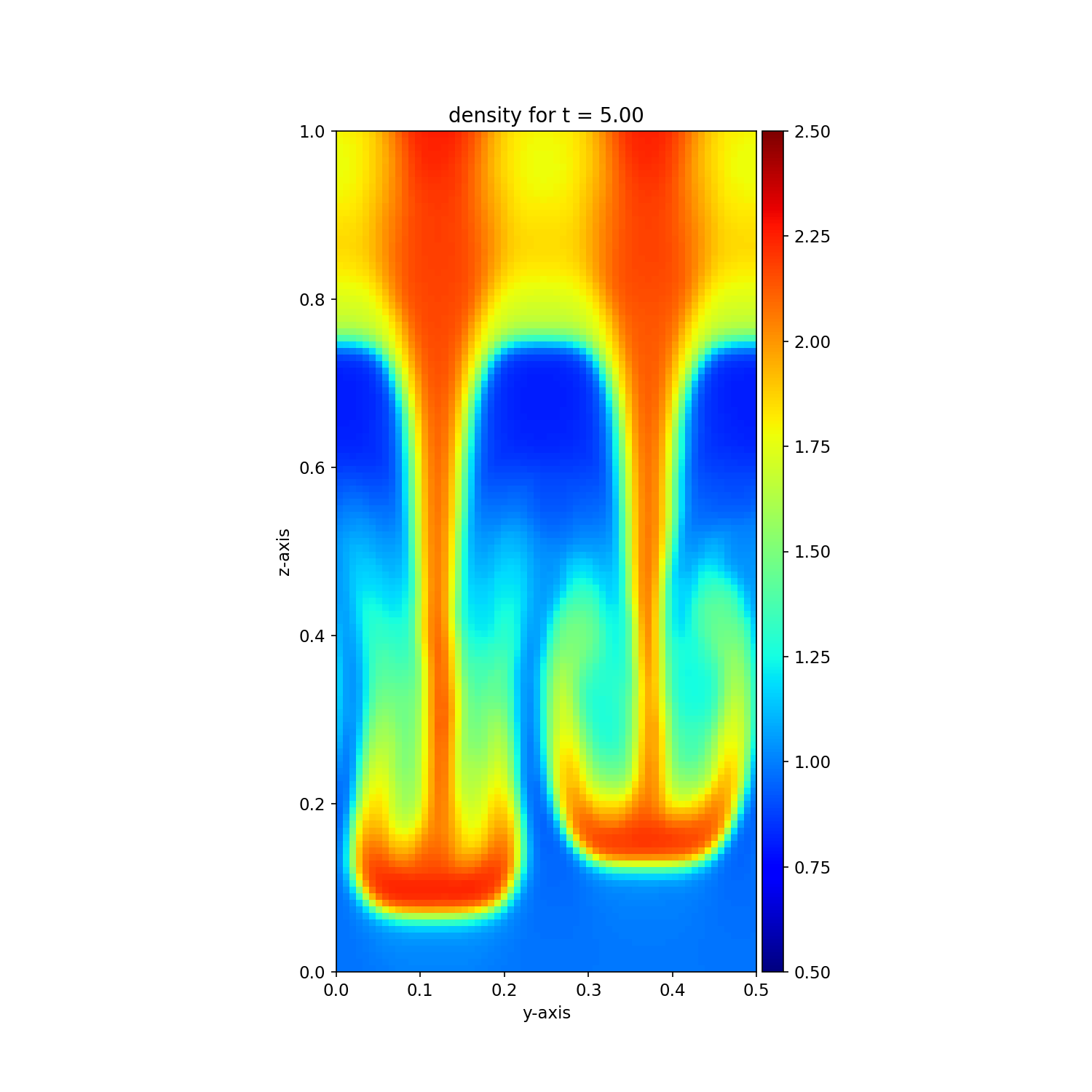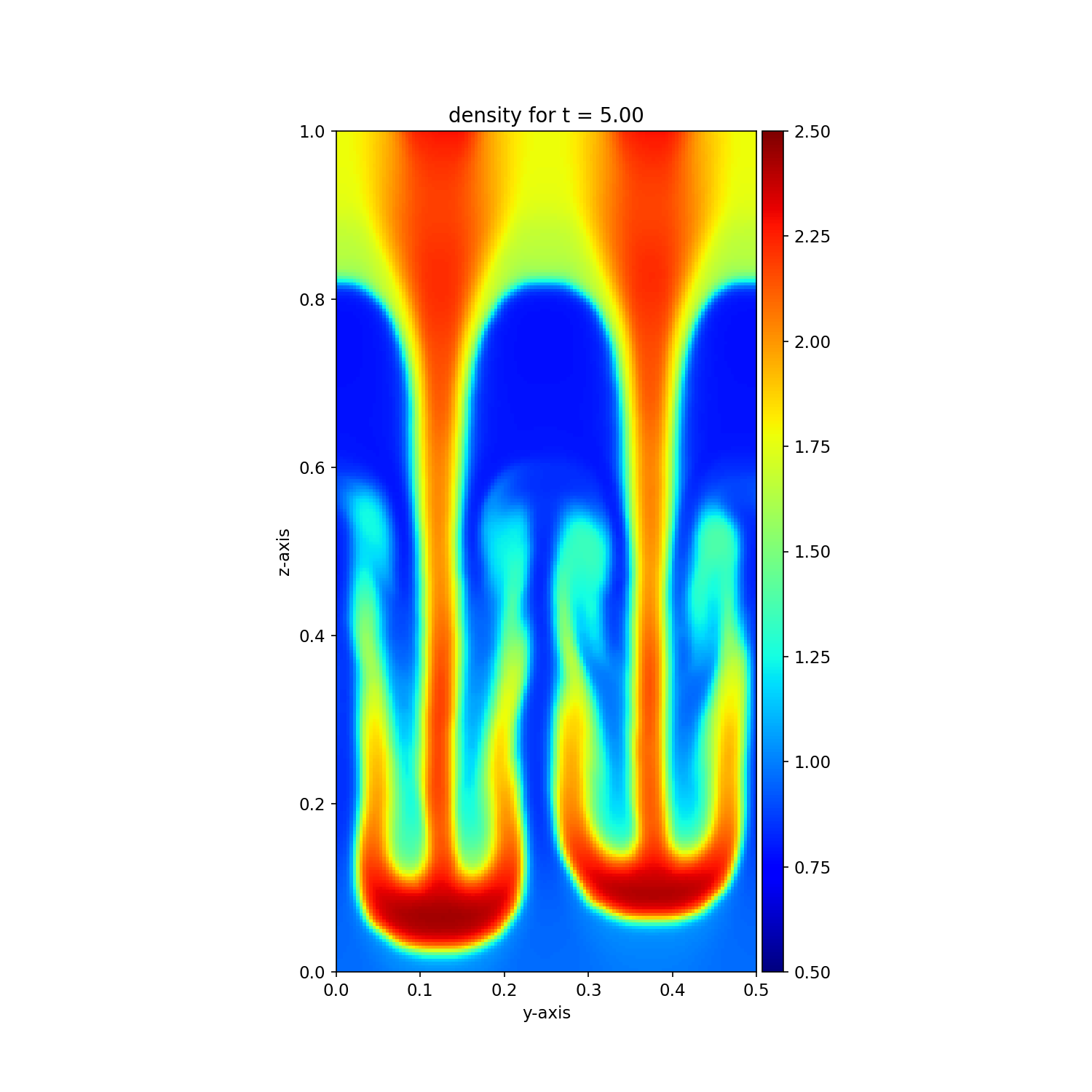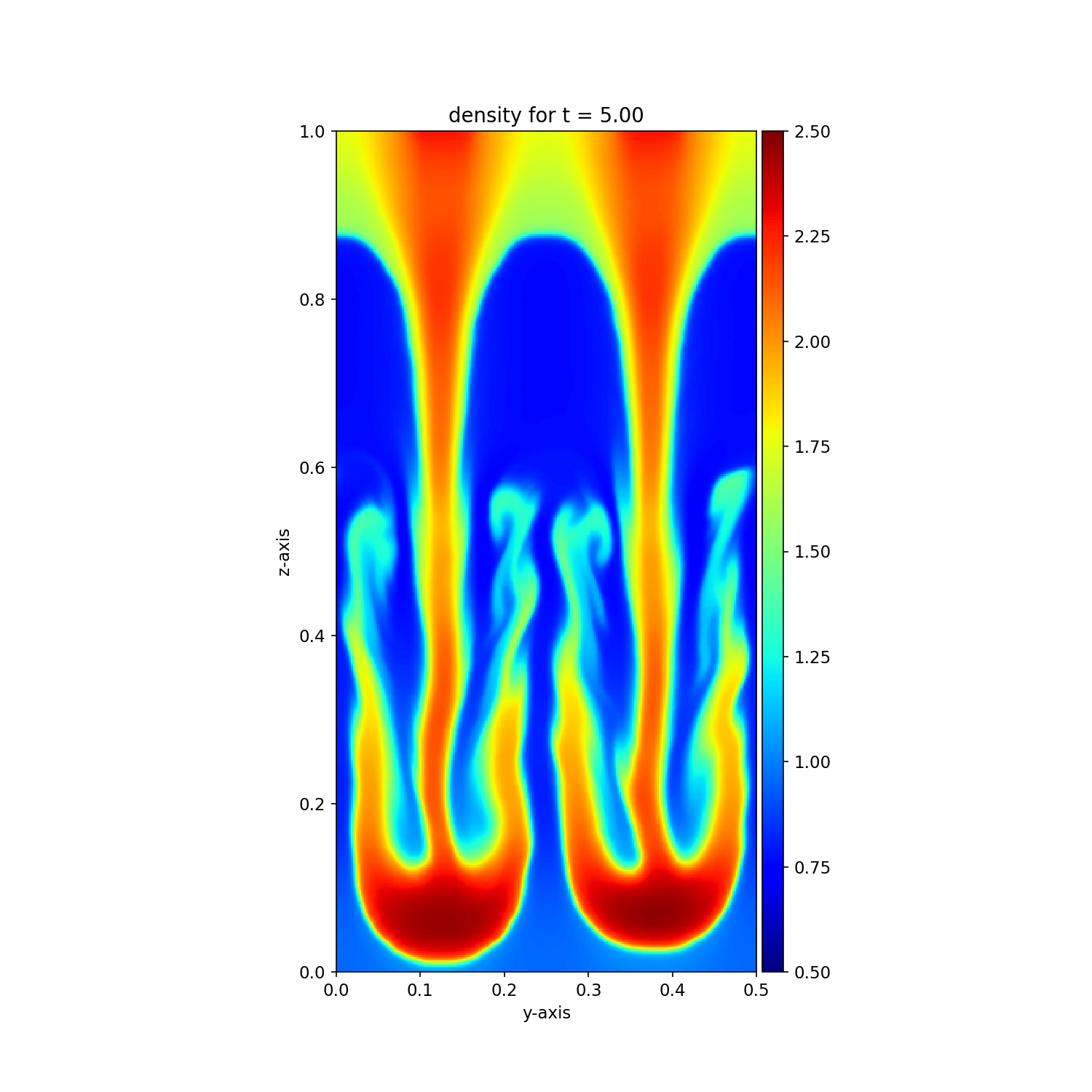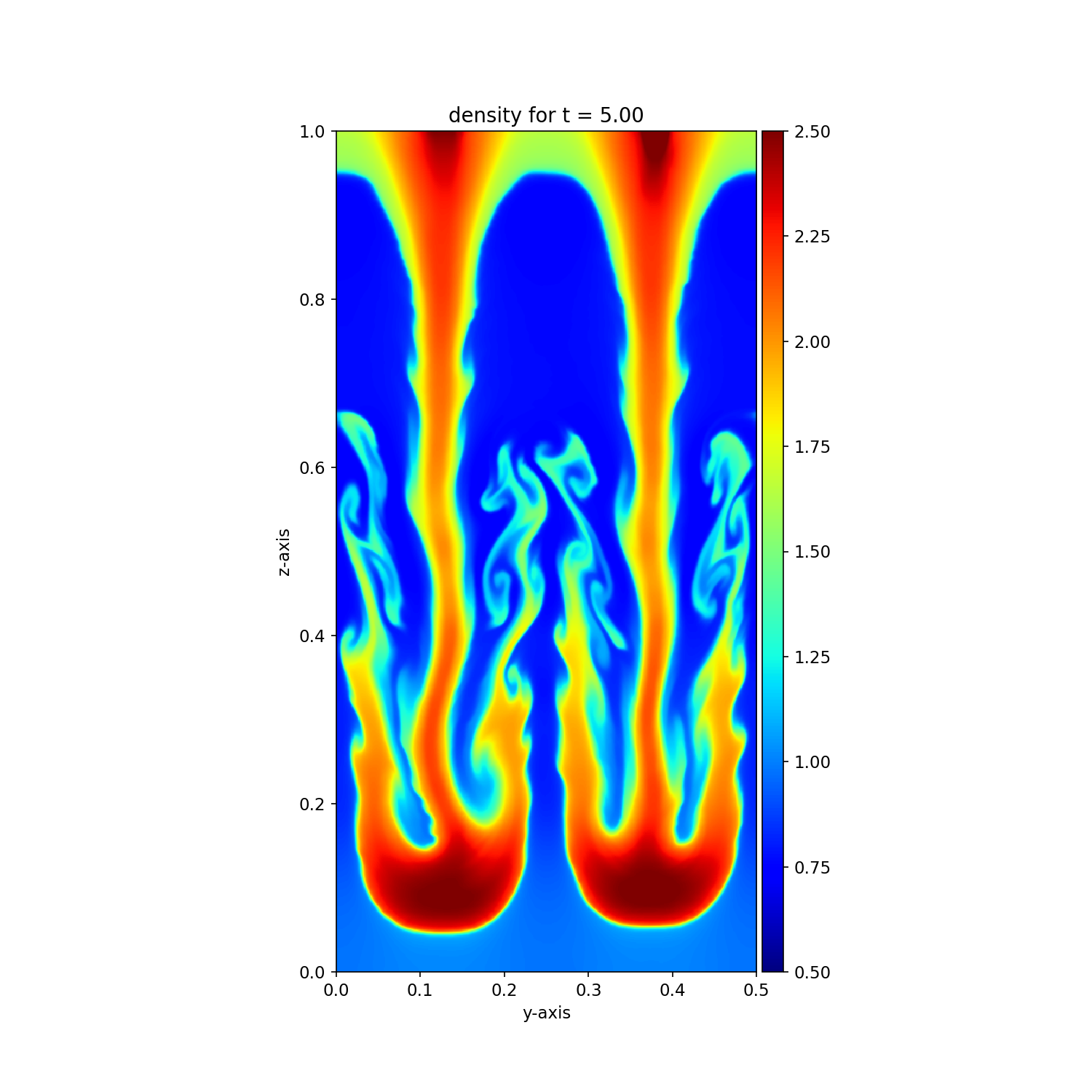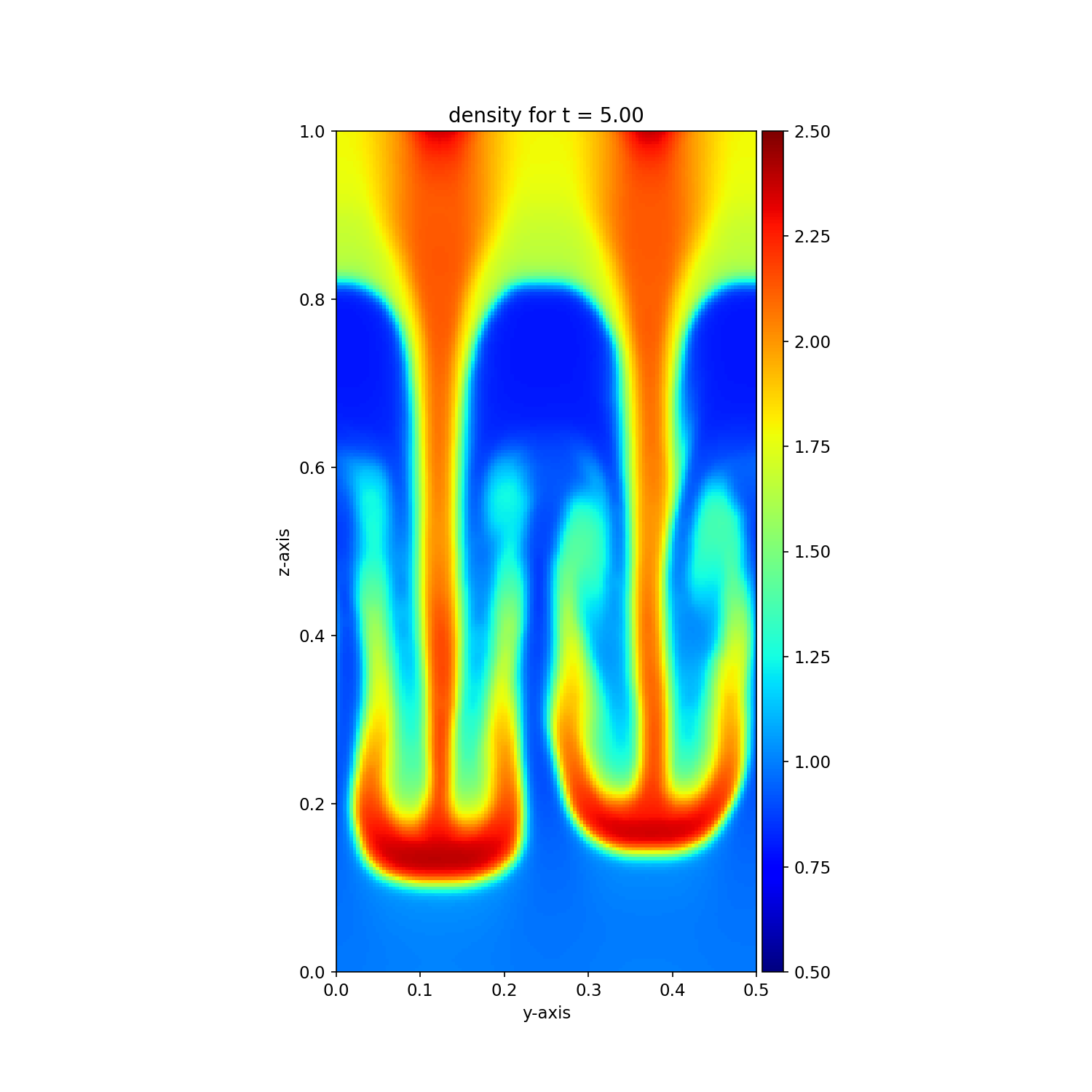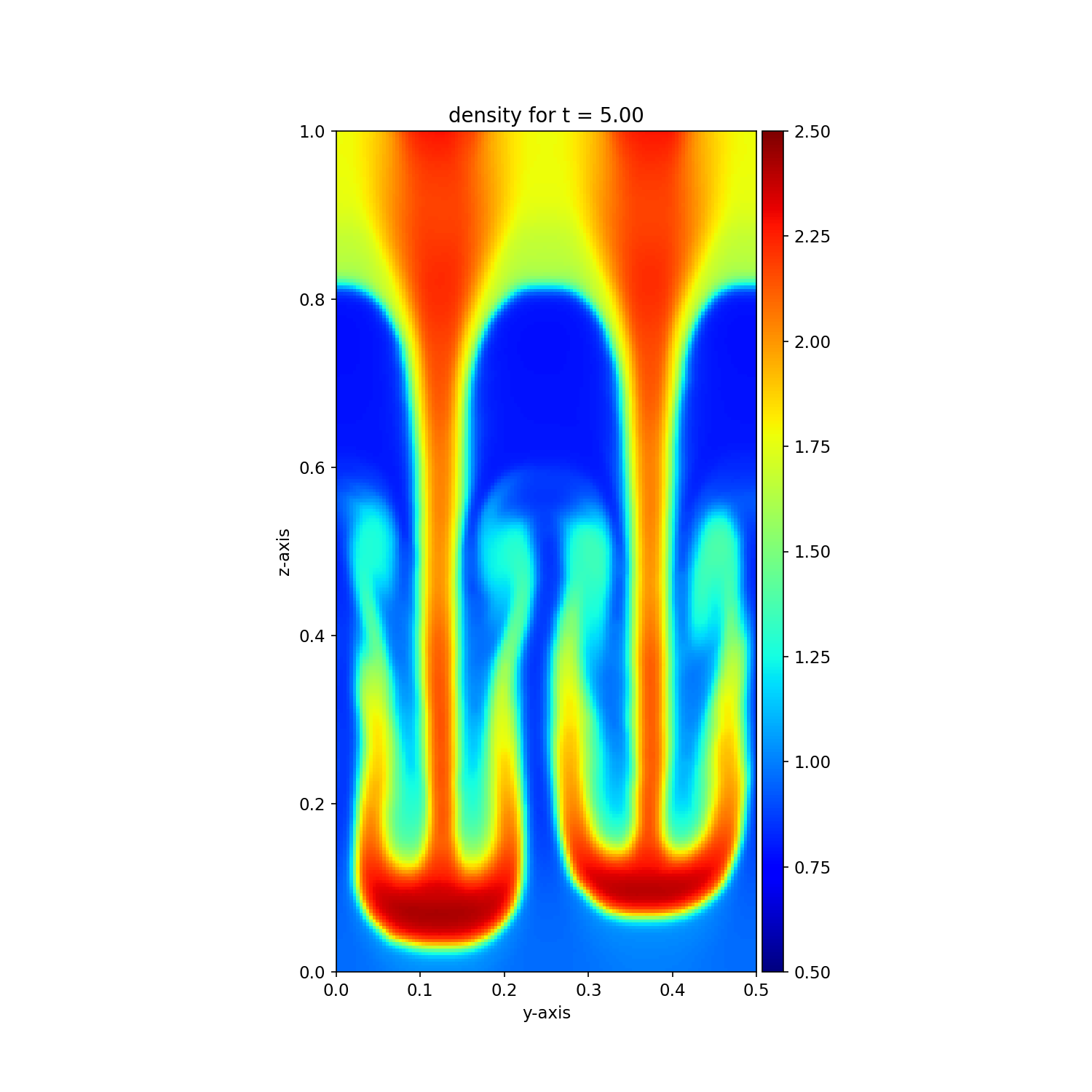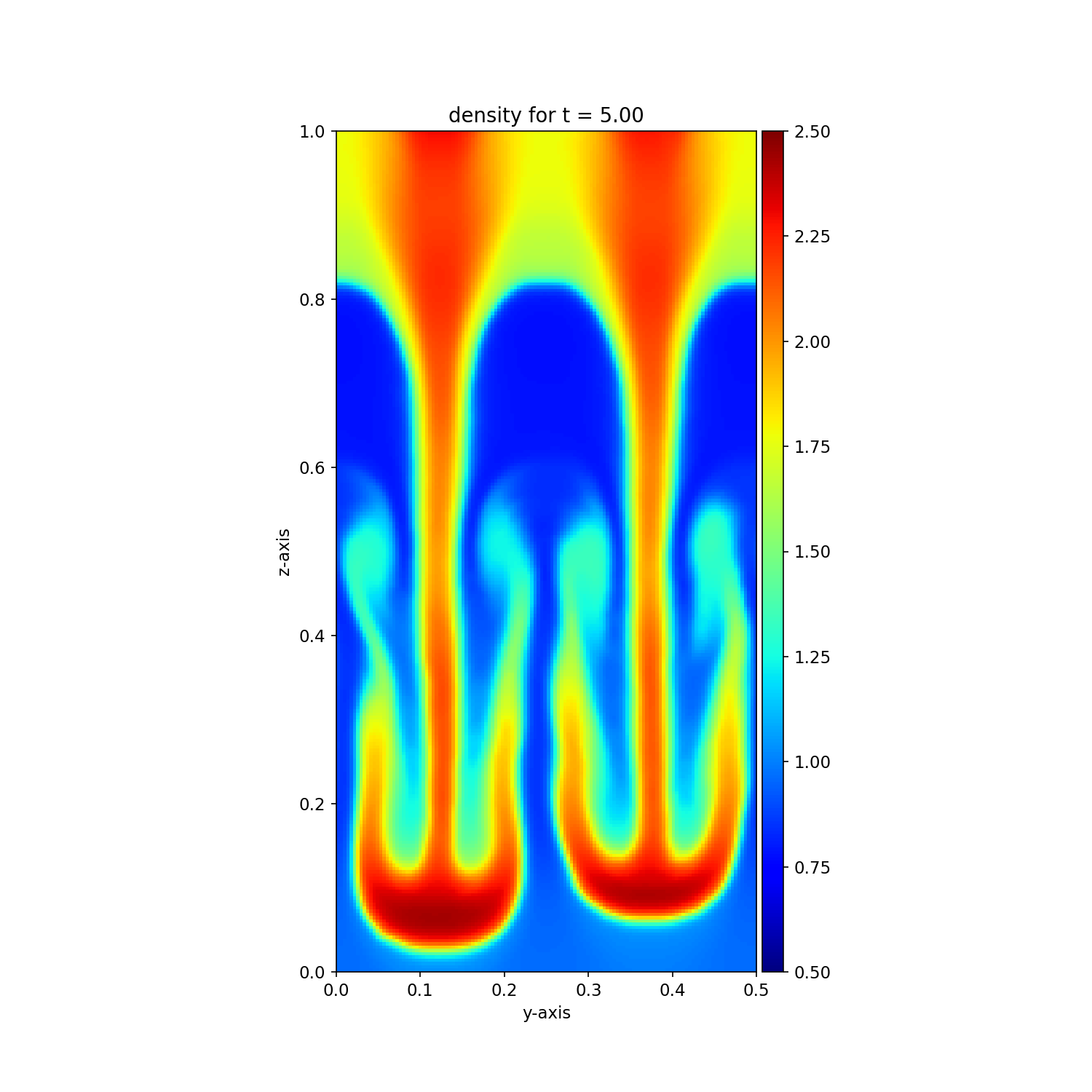Rayleigh Taylor instability¶
Results from RT experiments run with different parameters¶
In these experiments, we change various parameters and study the effects in resultant density. We use both the Ramses solver (ramses/mhd_eos from the Dispatch-Bifrost repository) and Bifrost (ideal_mhd from the Bifrost <https://github.com/ITA-Solar/Bifrost>_ repository) to simulate the experiment. Simulation snapshot are taken after 5 seconds, and at this time we can compare results from different runs.
Initially, experimental parameters follow Abel. T (2011)
Experiment Parameters |
|
|---|---|
Quantity |
Value |
y0 |
0.5 |
d1 |
1 |
d2 |
2 |
deltay |
0.025 |
deltavy |
0.025 |
dymin |
0.3 |
dymax |
0.7 |
with gas constant gamma = 1.4
Ramses¶
First, we study the Ramses solver
Varying Ramses slope type¶
slope_type is a parameter for the ramses solver. We tried the different values 1, 2, and 3.5
The following simulations are run on grids with resolution 128x256 in x, y.

|
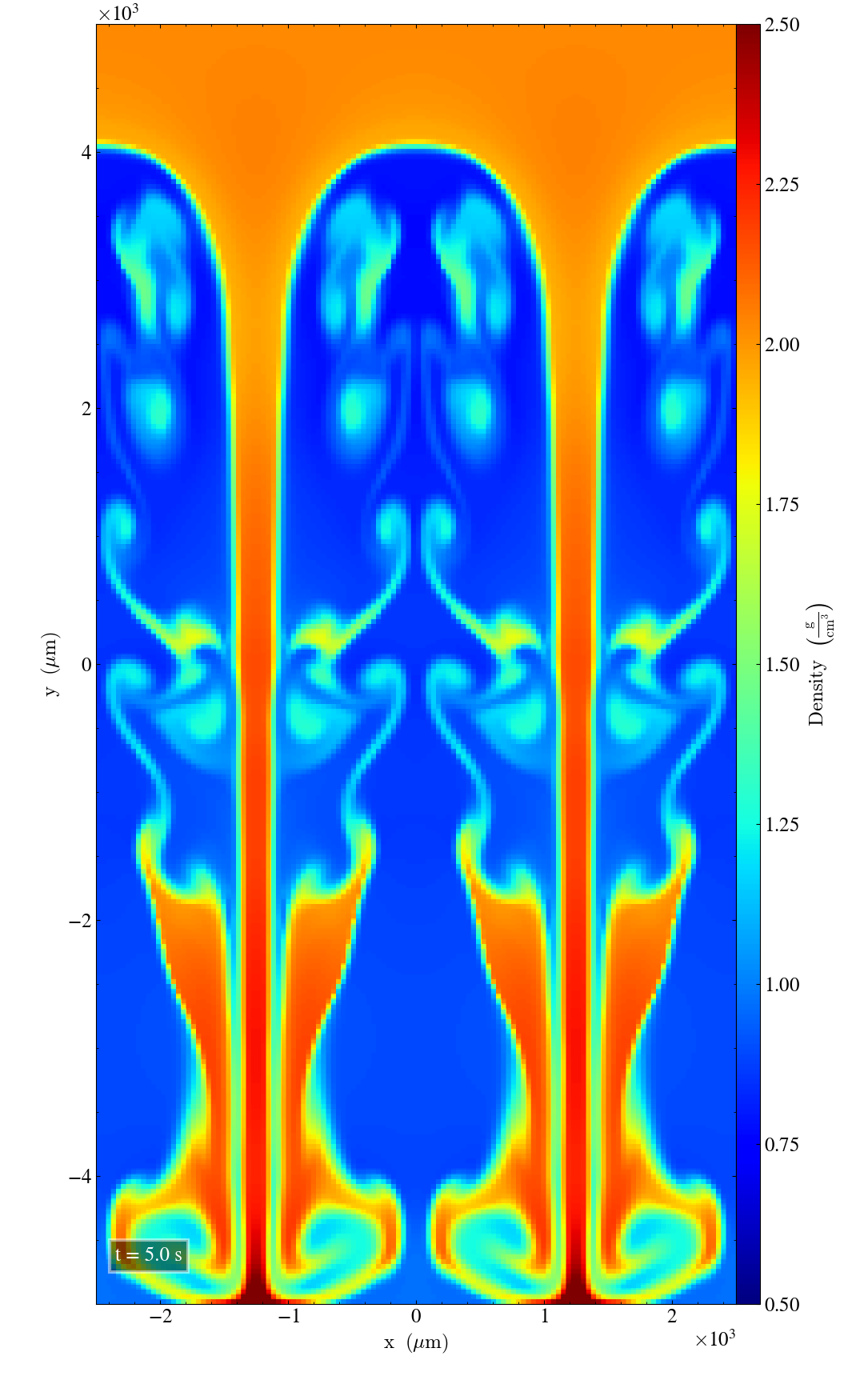
|
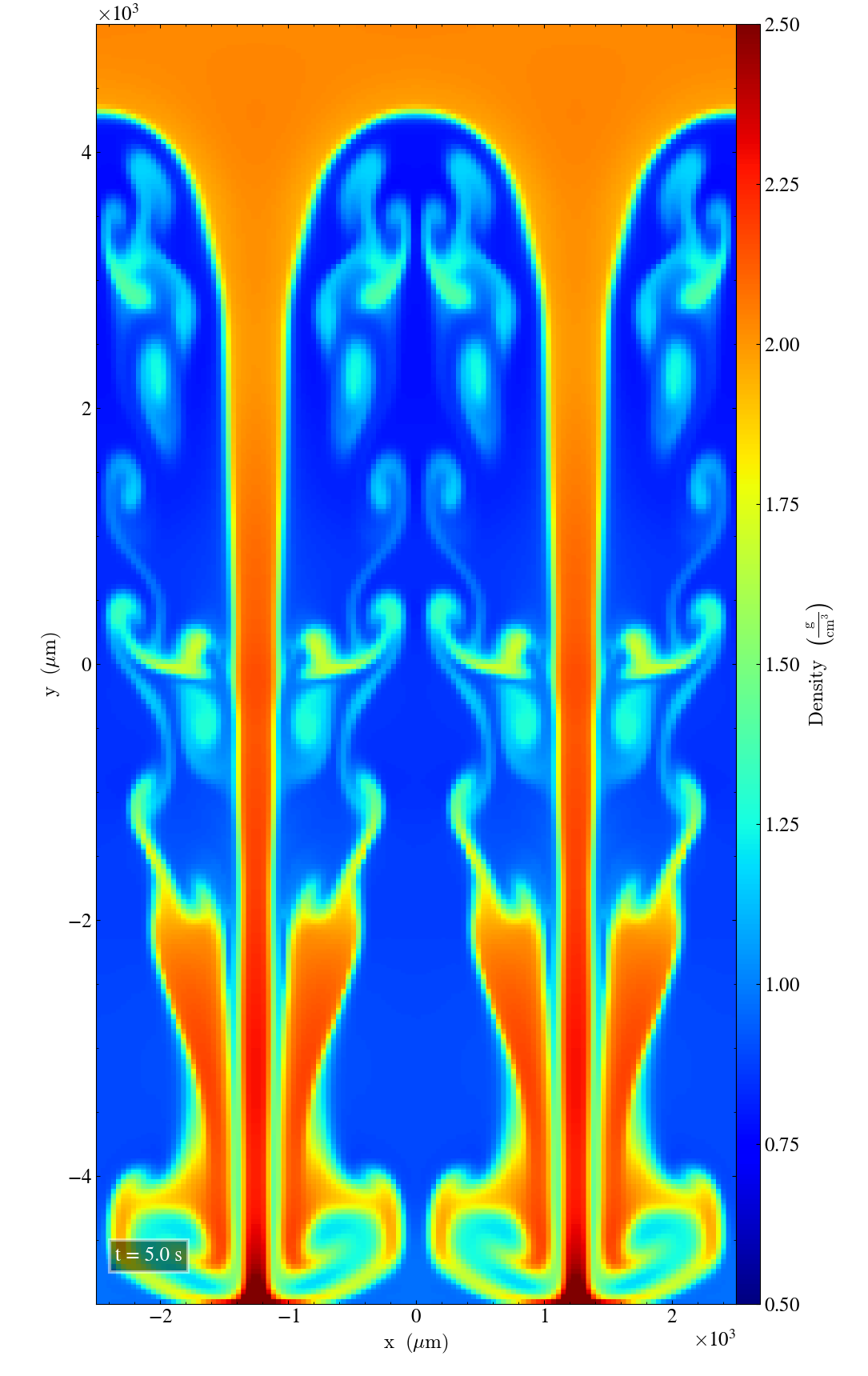
|
Some details in the results are clearly dependent on the slope_type variable.
Larger values of this parameter gives the results finer/smaller scale patterns.
Larger slope_type also introduces more non-linearity, and the flow becomes more turbulent.
Effects of grid in Ramses¶
Falling back to the default slope_type=3.5, we study how grid resolution affects results.
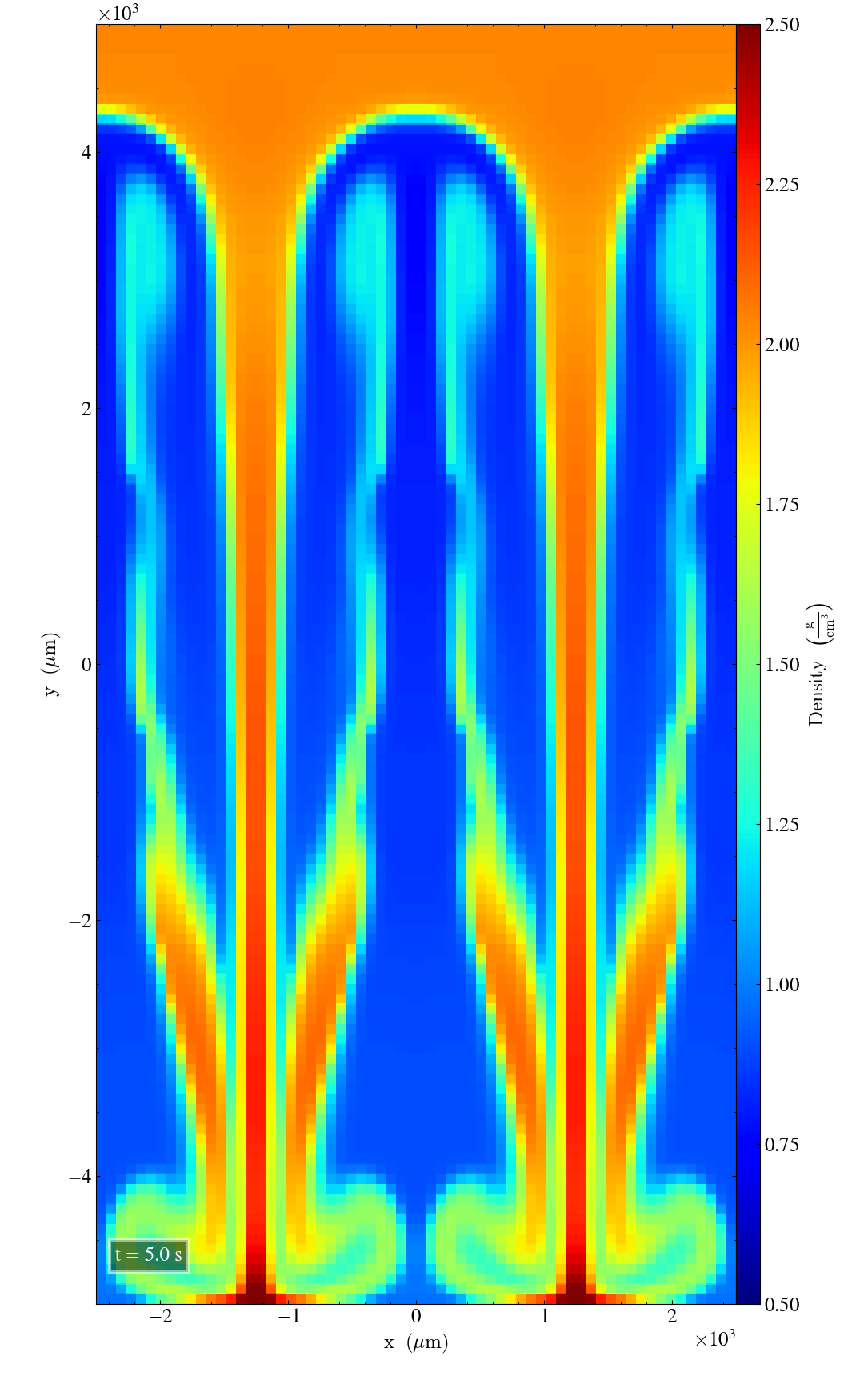
nx=64, ny=128¶ |

nx=128, ny=256¶ |
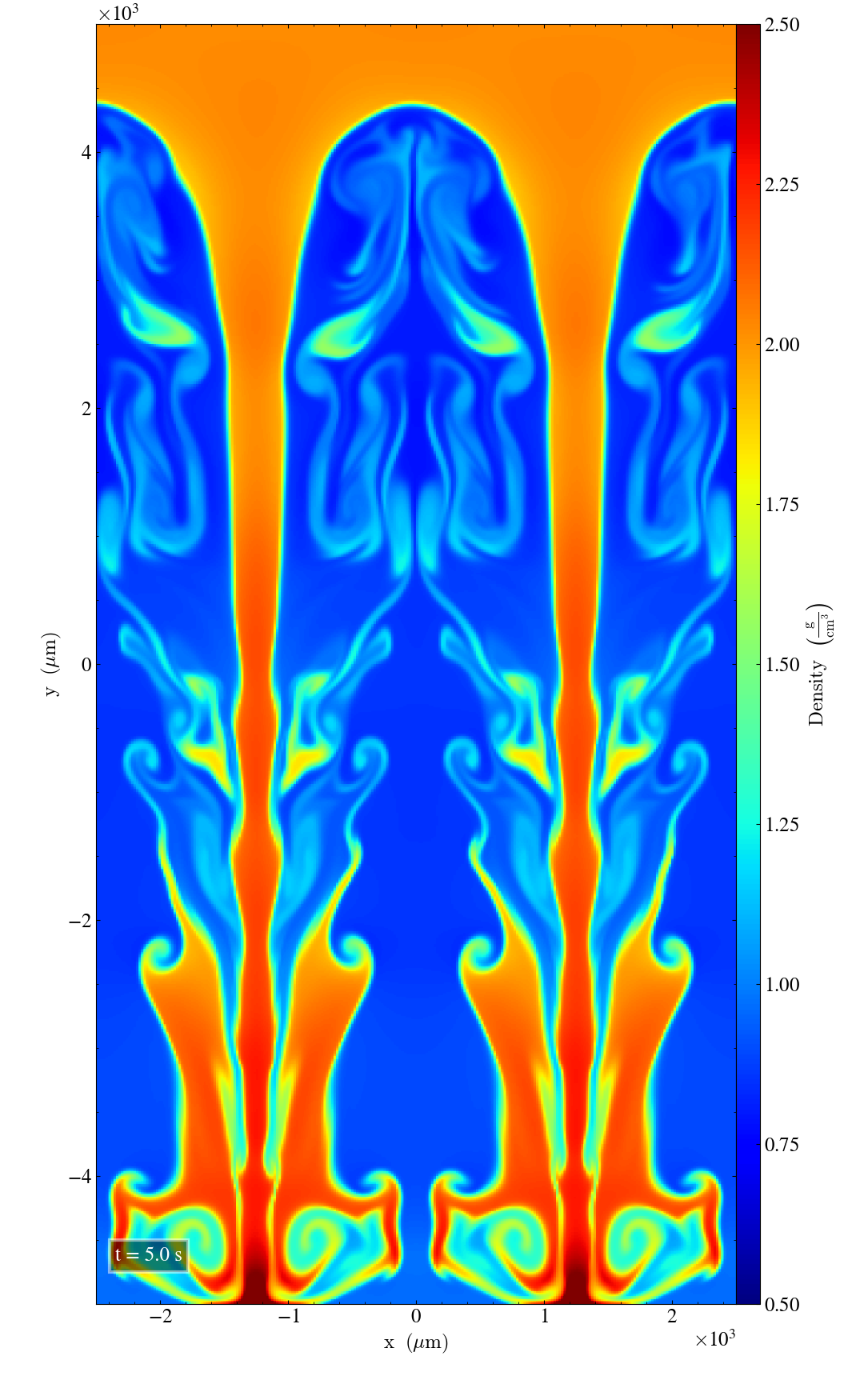
nx=256, ny=512¶ |
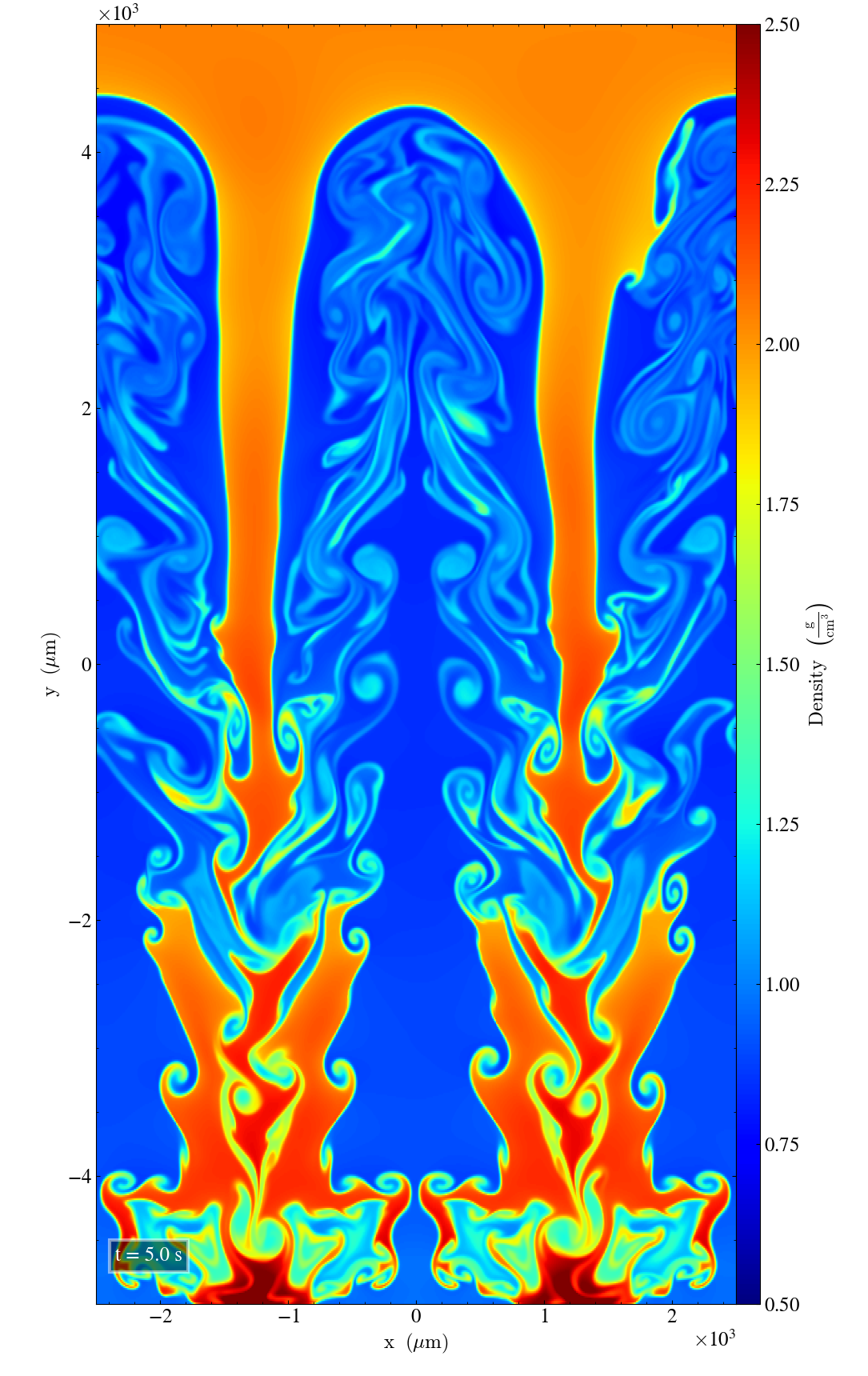
nx=512, ny=1024¶ |
Finer resolution gives more details to the results, and patterns exists on smaller scales. It also makes the density profiles less symmetric and more chaotic.
Bifrost¶
Now, we move on to the Bifrost solver. We have the same intial conditions, and the Bifrost parameters are by default
mhd_template['nu1'] = 0.1
mhd_template['nu2'] = 0.1
mhd_template['nu3'] = 0.5
mhd_template['nu_r'] = 0.3
The default grid is nx=128, ny=256.
Changes to the Rayleigh Taylor scripts¶
I made some changes to the make_snap.py, such that the intial state has the correct symmetry. The np.roll function is used on pz, shifting the array to the right such that the two fingers are side by side. I did not fix the boundaries dymin and dymax.
In make_plot.py, it is possible to plot time evolution with the make_plot() function, just uncomment the lines at the bottom of the document.
